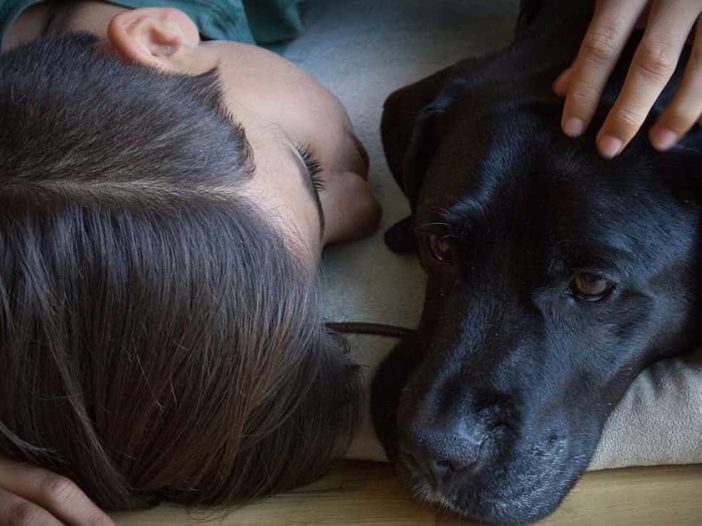
Everyone in the household is affected when a pet dies. However, while adults have an understanding of death and they’ve likely experienced the passing of someone close to them, children are different. Often, the death of a pet is the first time children are faced with loss. Adults often don’t understand how a pet’s passing affects children.
Even though the grief may pass relatively quickly, the child’s feelings can be complex. As a parent, you’ll need to help your child process their feelings and navigate what can be a traumatic experience. Let’s look at five things you can do to help your child to cope whether they’re a toddler, an elementary school student or an adolescent.
1. Tell the Truth About What Happened
While you need to provide age-appropriate information, you also need to be honest with your children. Regardless of whether you had to euthanize the animal or it died suddenly, you need to explain what happened. Try to avoid saying the animal went to ‘sleep’.
If your child is very young, you may want to say the animal’s body stopped working or they were ill but they will no longer be in pain. If the child is old enough to understand, explain that euthanization was a difficult choice but it was the kindest thing you could do for the animal.
You should also be honest about your feelings. It’s okay to show that you’re sad or angry or feeling empty. This will give the child permission to be honest about what they are feeling.
It’s also a good idea to notify teachers or other caregivers about the pet’s death. This will help them to understand any changes in the child’s behavior and allow them to offer support where necessary. Your child may need guidance from all the adults in their life as they navigate the grief process.
2. Find A Way to Memorialize the Animal
Regardless of whether you opt to bury or cremate your pet, you can create a lasting memorial that will help the entire family to find closure. Now more than ever, there are a wide variety of pet memorial products on the market today.
Pet memorials can take several forms including custom urns, jewelry, and other keepsakes. Some families scatter the pet’s ashes in a park they loved or create a headstone at their burial site. You can also get your child involved in:
- Choosing a piece of pet memorial jewelry
- Making a scrapbook filled with photos of the pet
- Writing about their favorite memories with animals
- Reading books about pet loss
- Choosing where to store your pet memorial keepsakes
- Planting a tree in the animal’s favorite spot
- Planning to light a candle annually on the pet’s birthday or the date of their passing
- Posting on a website dedicated to pet loss or sharing a tribute on social media
3. Allow Grief to Take Its Course
Grief is a process and it’s highly personal. Even after participating in one of the activities designed to bring closure, your child may continue to feel sad or empty. They may talk about the animal constantly or ask questions for days, weeks, or even months. Some children may not be ready to talk until some time has passed even though they’re thinking about the pet a lot.
Your child may go through the same stages of grief as an adult: disbelief or shock, anger, denial, guilt, depression, and resolution. Allow them to express their feelings at each stage and let them know that what they’re feeling is normal.
If you don’t allow the child to process everything they’re feeling, those emotions could come back unexpectedly in the future. The pain of losing a pet decreases over time but it must first be felt and expressed.
4. Be Supportive No Matter How Your Child Responds
Some children internalize their feelings and become withdrawn when the family pet dies. Others ask question after a question or share memories constantly. Both approaches are normal and you need to be there for your child in either case.
If they aren’t ready to talk, let them know you’ll be available when that time comes. If they’re eager to share, listen and provide answers where possible. Many children find it easier to talk at bedtime when it’s quiet and they feel safe but you’ll know what works best for your family.
Make sure the child eats, gets adequate sleep, and continues to play and spend time with friends. Also, ensure they keep with a routine that’s as normal as possible. Taking care of the mind and body will help them to go through the grief process more effectively.
5. Don’t Rush to Get Another Pet
If your child is struggling to come to terms with the loss of their pet, you may be tempted to adopt another animal quickly to fill the absence. You may think this will distract the child and help them to get over the other pet.
However, it’s impossible to truly replace one pet with another. The only way children learn to process grief and cope with loss in a healthy manner is if they’re given the time and space to do so. While no one can tell you when is the best time for your family to get another pet, it’s usually best to wait until everyone has honored the deceased pet and processed their feelings in their own way.
Use This Opportunity to Draw Your Family Closer Together
The death of a pet is significant and it can be very hard for children to handle. However, with the right support from trusted adults, they can navigate the changes and grief.
If the family pet has passed away, this is an opportunity for everyone in the household to talk about their feelings and deepen their connections. Even though it is a deeply painful experience, it could bring you, your child, and other relatives closer together.
